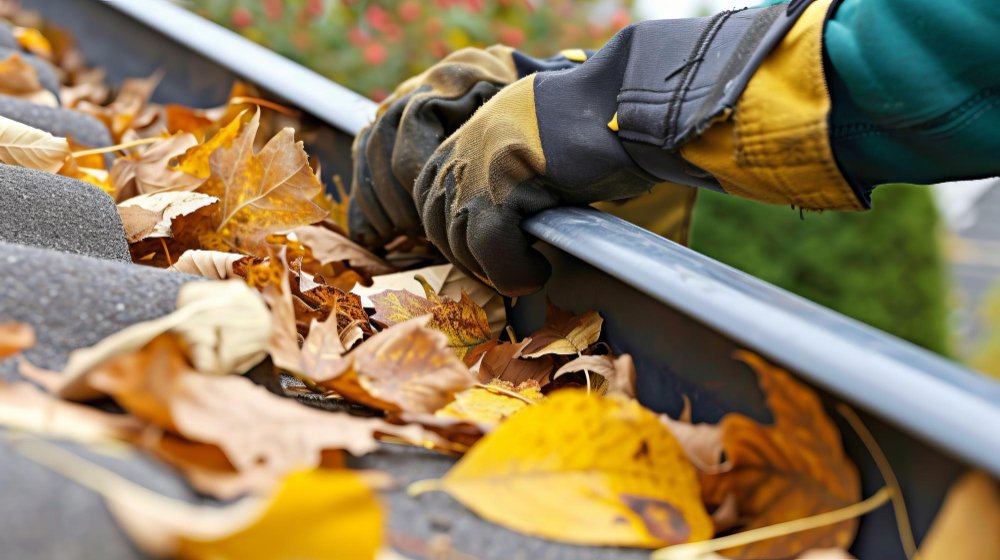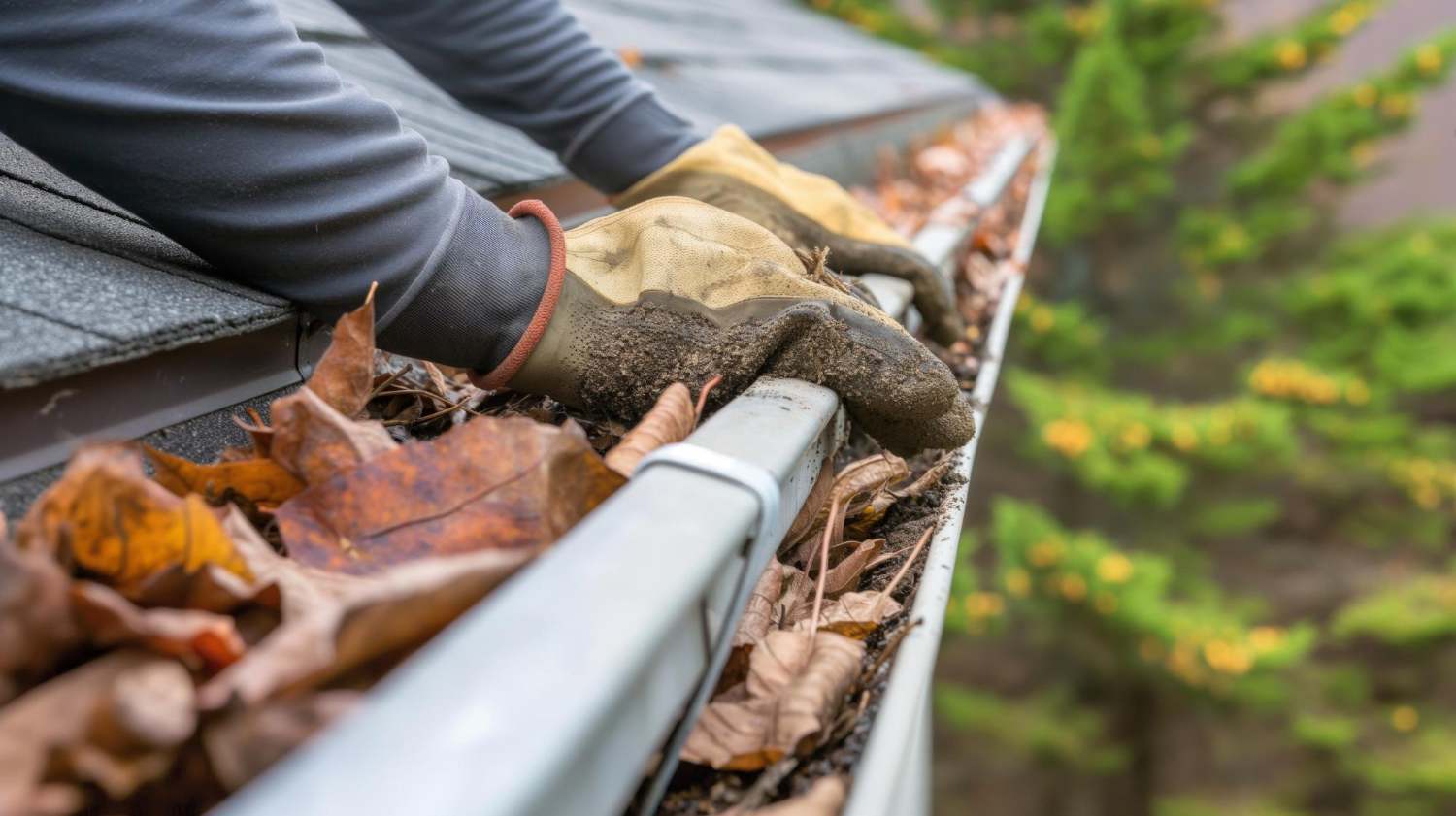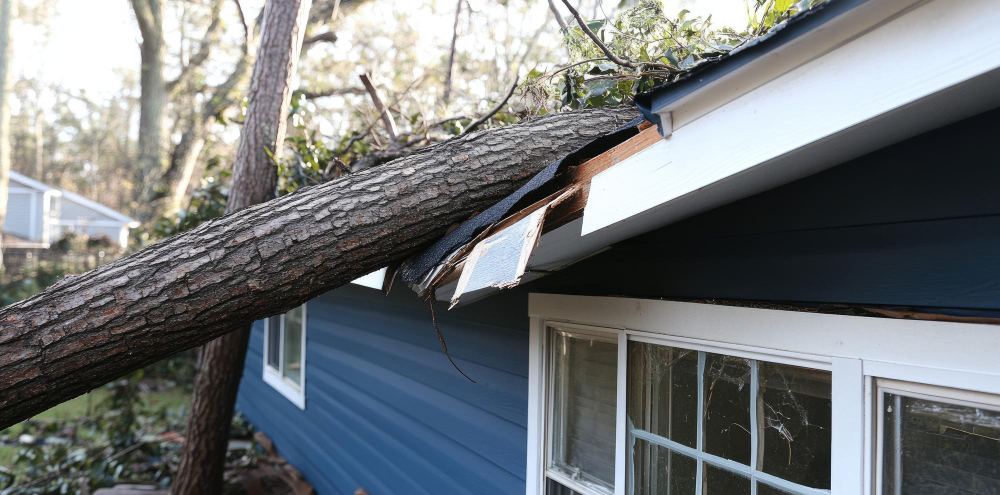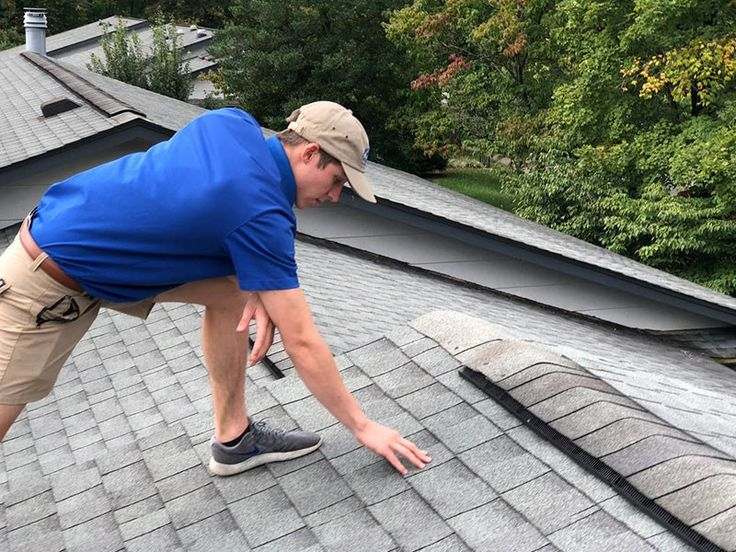Gutters play a crucial part in keeping your roof and walls looking tidy and preventing leaks. They are one of the main home maintenance tasks that helps safeguarding your property from water damage. Blocked gutters cause overflow, leading to costly repairs for your roof and foundations. This job is often overlooked due to the complexities involved in this process, which is understandable. To ensure your gutters function properly throughout the year, it is recommended to clean them at least twice a year, or more often if necessary.
In this guide, we will elaborate the steps necessary to clean your gutters effectively. You will also get a list of required tools and important safety precautions to ensure the job is done efficiently. Whether you’re a seasoned DIY enthusiast or a beginner, this guide provides the know-how to keep your gutters clear and functioning properly.
What is the Significance of Cleaning Your Gutters?
Water Damage Prevention
Blocked gutters may result in water spilling over near your foundations, which can create cracks, causing uneven settling and potential flooding in the basement. There is also a risk of water seepage into your walls, leading to dampness, mould, and deterioration.
Roof Protection
Water accumulation in blocked gutters can put additional strain on your roof and fascia boards, potentially leading to leaks, sagging, and even premature failure of the roof. If left unaddressed, this issue can significantly compromise the integrity of your roofing system, potentially leading to costly repairs or replacements.
Pest Control
During the winter, gutters filled with debris can lead to water freezing inside, forming ‘ice dams’ on the roof. This situation attracts pests such as rodents, insects, and birds, which can spread diseases and cause more damage to your property.
Extended Lifespan of Gutters and Roof
Cleaning your gutters regularly helps prevent damage from debris and water build-up. Neglecting this maintenance can lead to costly premature replacements or repairs.
Reduced Repair Costs
Addressing gutter blockages early can prevent costly repairs related to water damage, roof damage, and foundation problems. By regularly cleaning and maintaining your gutters, homeowners can ensure adequate protection of their properties from the harmful impacts of accumulated debris.
Improved Aesthetics
Clean gutters enhance the look of your home and also play a vital role in ensuring its structural integrity. Keeping gutters maintained stops clogs, which can lead to water damage and costly repairs. Cleaning your gutters enhances aesthetics and can attract buyers.
Considerations: Whether to Repair, Replace, or Clean Your Gutter
Gutters can become clogged or damaged with time, leading homeowners to wonder whether to repair, replace, or clean them. There are key considerations to help you make the best decision for your home’s protection and gutter functionality.
Repair Considerations
Minor damage: Small leaks, loose brackets, or damaged joints can often be repaired with sealant, replacement of hardware, or reattaching detached sections.
Cost-effective: Repairing gutters is generally more affordable than a full replacement.
When to repair: If the damage is localised and not extensive, and the gutter remains in relatively good condition, repair is a viable option.
Replacement Considerations
Extensive damage: Noteworthy cracks, rust, sagging sections, or frequent clogs indicate that a replacement is required.
Overflowing gutters: Gutters that constantly overflow during thunderstorms, despite regular cleaning, are a sign of a major issue that may require replacement.
Water damage: Broken gutters can damage the roof, fascia boards, or foundation and they need to be replaced.
Preventative measure: Replacing gutters, particularly with an excellent material, can prevent potential issues and protect your home from water damage.
Cleaning Considerations
Routine maintenance: Clean gutters twice a year, in spring and fall, for avoiding clogs and leaks.
Preventative measure: Regular cleaning can prevent debris build-up, which can result in leaks, sagging, and other problems.
Cost-effective: Gutter cleaning is a relatively inexpensive way to maintain your gutters and prevent more expensive repairs in the future.

Step-by-Step Process to Clean Your Gutters
Follow these simple steps to keep your gutters clear and working well to ensure your property stays safe and dry all year long.
Gutter Cleaning Tools & Equipment
Designed to eliminate debris and keep gutters clean, there are multiple gutter cleaning tools and equipment that you need to gather.
Basic Tools
- Gutter Scoops: Handheld tools with a scoop for manually removing debris. They are simple and inexpensive.
- Gutter Brushes: Stiff brushes that often come with extension poles for scrubbing debris and clearing clogged gutters.
- Gutter Cleaning Wands: Telescopic poles that can hold a brush, scoop, or pressure washer nozzle, making it easy to reach gutters without the need of a ladder.
- Tongs or Grippers: Tools designed for picking up and removing larger debris from gutters.
Specialised Equipment
- Gutter Vacuums: These powerful vacuums are made to remove debris from gutters, even from high places. They usually have extension poles and tools.
- Pressure Washers: With the right tool, a pressure washer can quickly clean gutters by blasting away debris.
- Gutter Cleaning Robots: These are remote-controlled robots which can clean gutters automatically.
- Leaf Guards: These are screens placed inside gutters for preventing leaves and debris from entering.
- Telescopic Leaf Blower Attachments: Some leaf blowers come with specialised attachments, allowing you to blow debris out of gutters from the ground.
Set Up Your Ladder
The primary step is to set up your ladder along the wall. You must follow safety protocols when working on a ladder. This will help you make sure that it clicks securely into position and can stretch sufficiently to access your gutters.
Don’t place your ladder on the gutters. You can use a ladder stand-off if you can’t reach your ladder high enough without making contact with anything. Keep in mind the 4:1 rule – for every 4 feet of ladder height, position it 1 foot away from the wall.
In case of a bumpy ground around your ladder, use a ladder levelling tool to make it stable. There should be three points of contact on the ladder, and if needed, have someone hold the bottom for extra support.
Secure Your Bucket
Before climbing with your bucket, ensure your ladder is level. Use an S hook to securely hang your bucket on the ladder. This practice helps you maintain three points of contact while you work.
Remove Debris from Gutters
When both your ladder and bucket are in position, it’s time to begin the gutter cleaning process.
- Always wear safety goggles to protect your eyes from any bits of dried leaves or rubbish that may fly up while you are working.
- Use rubber gloves under your work gloves when handling wet debris to keep your hands dry and protected.
- Start cleaning by the downspout and make sure your ladder is stable before going up.
- Clean the downspout filter for better water flow.
- Use your hands to remove sizable items, such as leaves and twigs.
- For any stubborn remains, use a trowel or gutter scoop to help get it out effectively.
Flush Debris Through a Hose
After cleaning the large fragments of debris, you can flush your gutters and remove remaining dust and filth with a garden hose. When using your hose, start at the farthest point from the downpipe to avoid rinsing the same spot again.
You can also buy a telescopic pressure washer lance, enabling you to clean your gutters using a pressure washer while remaining on the ground. Remember to repeat this process for the rest of your home to have clear gutters.
Check the Downspouts
Once the gutters are cleaned and the water which is flushed is draining slowly, inspect the downspout for blockages and any trapped remains. Activate the hose and rinse the spout. If the water output is lower than the input, an obstruction exists.
- Put the hose into the downspout from the earth surface.
- Activate the hose at maximum pressure to attempt to clear the blockage.
- If the clog remains, consider using a plumber’s snake to remove the obstruction gently.
- For downspouts connected to concealed drainage systems, you’ll need to detach the bottom section to reach the extended pipe.
Inspect Gutter Drainage & Slope
Once you have cleared the downspout, go ahead and flush the gutters once again. Check that the water flows and drains properly. Finally, inspect for any possible leaks at the joints and connections to ensure everything is functioning correctly.
- Stagnant water in the gutter indicates improper sloping. Ensure gutters slope 1/4 inch per 10 feet toward the downspout.
- Ensure that all gutters are firmly attached to the house for added safety.
- Look for damage in all gutter and downspout sections.
- Add supports or reattach gutters for improved stability, if necessary.
Finish Touch-Ups
With the help of gutter sealant, you need to seal any leaks in the seams and joints, and follow the directions on the product label carefully. To clean the outer side of gutters, use a pressure washer to wash away decay and mud. If required, apply a fresh coat of paint.
Once your gutters are clear of debris and function properly, think about installing gutter screens to minimise future cleaning efforts.
Bottom Line
To sum up, it has been found that cleaning gutters is not as difficult as you think. Once you have all the necessary tools and guidance, set up your ladder and begin cleaning your gutters like a professional. With regular maintenance, you can prevent excessive debris from accumulating, thereby dropping the project’s scope and eventually ensuring your gutters function as projected.
If you require assistance with gutter cleaning or a comprehensive range of gutter services at competitive pricing, please reach out to Scott Webb Construction. We eagerly anticipate helping you with your project.




